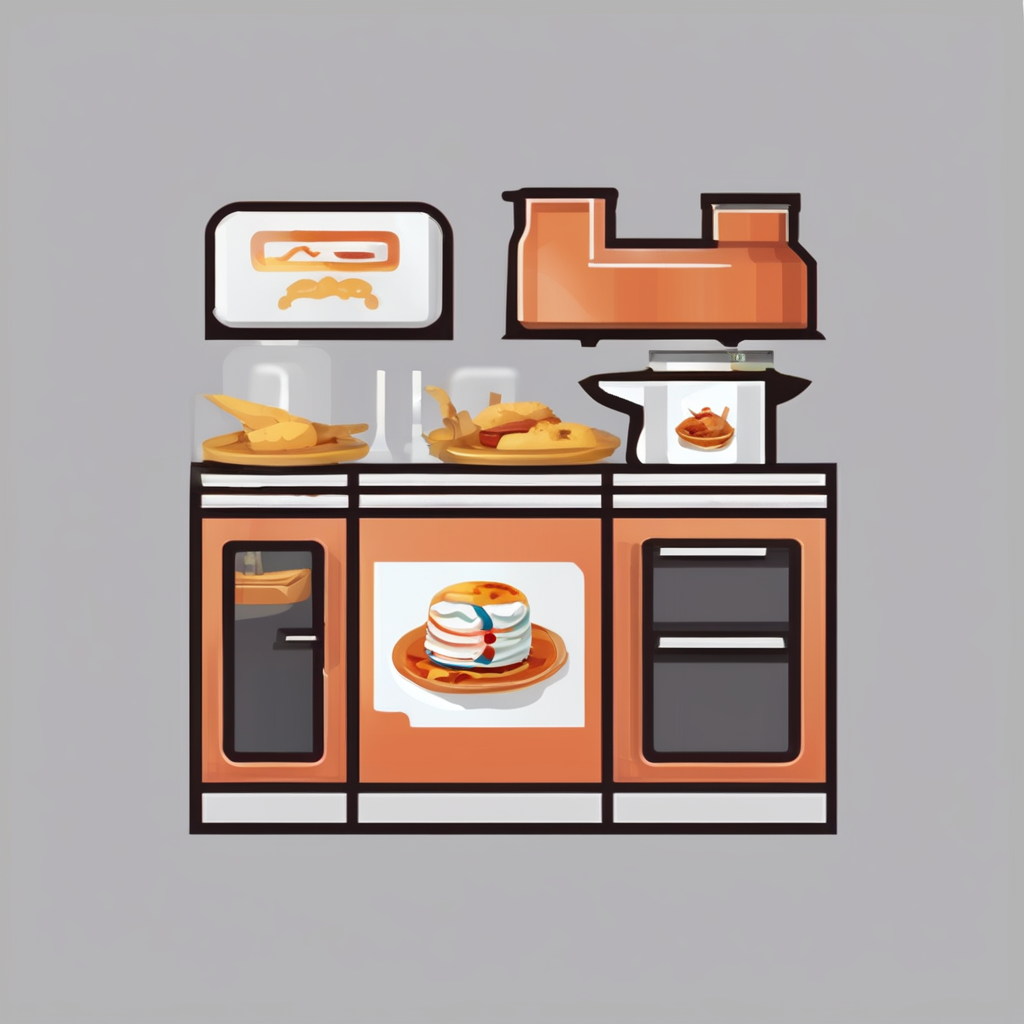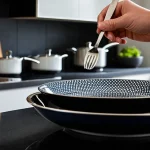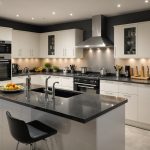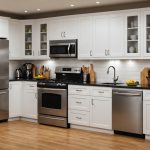Practical Ways to Elevate Restaurant Ambiance
Creating an inviting restaurant ambiance is crucial for customer attraction and retention in any UK kitchen decor setting. First impressions play a decisive role; often, customers form their opinions within minutes of entering, influenced by visual and sensory cues.
Lighting is a fundamental element in shaping the mood. Soft, warm lighting encourages relaxation, while brighter lights can energize and highlight the décor. The choice of UK kitchen decor should complement this, combining traditional or modern motifs to suit the restaurant’s theme. Thoughtful seating arrangements must balance comfort and intimacy, offering spaces for both groups and solo diners.
In parallel : What are the key factors in selecting the perfect wine list for a UK restaurant?
Music selection also contributes significantly to ambiance, with genres and volume tailored to customer demographics and dining times, enhancing the overall experience without overpowering conversation. Cleanliness cannot be overstated; a pristine environment signals professionalism and respect for patrons.
The layout should ensure smooth flow for both customers and staff, preventing congestion and creating a sense of spaciousness. These core elements collectively build a distinctive atmosphere that fosters customer loyalty—when diners feel comfortable and engaged, they are more likely to return.
Additional reading : What innovative concepts are shaping UK kitchen bars today?
Smart Lighting Choices for a Welcoming Environment
Creating the perfect restaurant lighting is vital to enhancing the overall dining experience. Different zones within a restaurant require tailored approaches to lighting styles, ensuring that each area serves its purpose effectively. For example, intimate dining tables benefit from warm, dimmed mood lighting to promote relaxation and privacy, while bar areas might use brighter, more vibrant lights to encourage social interaction.
Balancing natural and artificial lighting plays a key role in maintaining an inviting atmosphere throughout the day. Utilizing large windows to allow ample daylight reduces the need for artificial sources during lunch hours, but as evening falls, carefully positioned fixtures can recreate warmth and comfort without overpowering the space.
Popular UK kitchen restaurants often combine recessed ceiling lights with pendant lamps that highlight specific features like artwork or textured walls. This multi-layered lighting strategy not only accentuates the décor but also guides customers subtly through the dining zones, improving flow and comfort. Properly managed restaurant lighting can transform a simple meal into a memorable experience by setting the right tone from the moment guests enter the door.
Décor and Branding: Creating a Unique Identity
Designing a restaurant in the UK involves more than just aesthetics; restaurant décor trends play a critical role in shaping the customer experience and reinforcing brand identity. To establish a unique identity, integrating local design trends and authentic touches helps to create an environment that resonates with the community and appeals to target patrons.
Cohesive branding emerges through strategic use of artwork, colour schemes, and furnishings that reflect the restaurant’s ethos. For example, a modern bistro might utilise bold colours and abstract art to convey vibrancy, while a traditional English pub would lean on warm tones and vintage accents. This approach ensures that the UK restaurant design aligns seamlessly with the intended atmosphere and customer expectations.
Moreover, aligning décor with target patron expectations enhances satisfaction and loyalty. If the restaurant aims to attract families, comfortable seating and playful elements can be front and centre. For a fine dining establishment, luxurious materials and subtle branding cues contribute to an upscale feel. By thoughtfully combining local influences with tailored branding, establishments can distinguish themselves effectively within the competitive dining landscape.
Music Selection and Acoustic Comfort
Selecting the right restaurant music is crucial to creating an inviting atmosphere that resonates with your brand and clientele. A carefully curated playlist can subtly influence diners’ moods, encouraging relaxation or lively conversation depending on the desired ambiance. Matching background music with the restaurant’s theme ensures consistency and elevates the overall dining experience.
Beyond music choice, acoustic design plays a vital role in maintaining comfort. Proper acoustic treatment reduces echoes and minimizes noise levels, allowing guests to enjoy their meals without straining to hear conversations. This careful balance prevents overwhelming sound and maintains a pleasant volume, critical in busy dining environments.
Additionally, effective acoustic treatment enhances privacy by controlling sound travel between tables. This not only helps diners feel more at ease but also improves conversational ease, fostering a more intimate and sociable setting. Investing in both tailored restaurant music and acoustic comfort creates a harmonious space where customers can savor food and company alike.
Cleanliness and Organisational Appeal
Maintaining restaurant cleanliness is essential for establishing a positive customer perception. Visible cleanliness standards directly influence how diners assess the overall quality of a restaurant. When patrons enter a venue that prioritizes hygiene, they feel more comfortable and confident that the food served is safe and prepared carefully.
Open kitchens play a significant role in shaping perceptions of hygiene. An open kitchen design allows customers to see food preparation in real time, reinforcing transparency. This setup encourages staff to uphold tidiness rigorously, as any lapse in hygiene becomes immediately apparent. Consequently, open and tidy environments contribute significantly to a restaurant’s organisational appeal.
Customer trust builds strongly when hygiene best practices are visibly enforced. This includes clean dining areas, sanitized surfaces, and orderly kitchen spaces. Restaurants that consistently demonstrate these practices not only meet regulatory standards but also enhance their reputation. In sum, restaurant cleanliness directly affects customer satisfaction and repeat business by fostering trust and reinforcing professional standards.
Flexible Seating and Thoughtful Layouts
Designing an effective restaurant seating plan is essential for both customer comfort and operational efficiency. Flexible seating accommodates diverse groups—whether couples seeking intimacy, solo diners craving a quiet spot, or larger parties needing joined tables. This adaptability enhances guest satisfaction by ensuring that spaces serve various needs without feeling cramped or underutilized.
Optimising the layout goes beyond fitting seats. It directly impacts staff movement and accessibility, especially in UK kitchens where regulations demand clear pathways and safe distances. Thoughtful layouts streamline service flow, reducing bottlenecks and speeding up order delivery, which ultimately improves the dining experience.
Successful examples show how shifting from rigid fixed seating to versatile arrangements results in better space optimisation. Smaller tables can be merged or separated depending on demand, while strategically placed seating near windows or quieter corners invites longer stays. These modifications not only increase table turnover but also encourage repeat visits due to enhanced ambiance and comfort.
In sum, investing in flexible seating and well-planned restaurant seating layouts creates a balance between operational efficiency and guest satisfaction, a cornerstone for thriving dining establishments.
Expert Insights and Examples from UK Restaurants
Small
Creating the perfect ambiance is a vital part of many successful UK restaurants. Expert tips emphasize the importance of aligning the interior design with the brand’s personality and target audience, which directly influences customer satisfaction and repeat visits. Designers often recommend a harmonious balance of lighting, music, and décor to craft a welcoming atmosphere.
From the perspective of leading designers, achieving ambiance success stories hinges on subtle yet thoughtful details. For instance, adjusting lighting to create warmth without overpowering the space can elevate a restaurant’s feel instantly. Incorporating natural elements like wood and greenery also nurtures an inviting vibe, favored by patrons who appreciate authenticity.
Notable UK restaurants have set high standards through their ambiance strategies. These establishments often blend traditional charm with modern touches to appeal to a diverse clientele. Their success is reflected not only in positive reviews but also in how customers linger comfortably, enhancing overall sales. Examples include venues that utilize acoustic treatments to minimize noise while maintaining lively energy.
Innovative trends continue to shape customer perceptions of restaurant ambiance. Integrating technology like smart lighting and tailored soundscapes offers dynamic environments that adapt to different times of day or special events. This approach creates a memorable dining experience, boosting brand loyalty and distinguishing restaurants in a competitive market.
Understanding and implementing these expert tips and trends allows restaurateurs to transform their spaces effectively. This turns successful UK restaurants into standout venues known for both exceptional food and exceptional ambiance.




